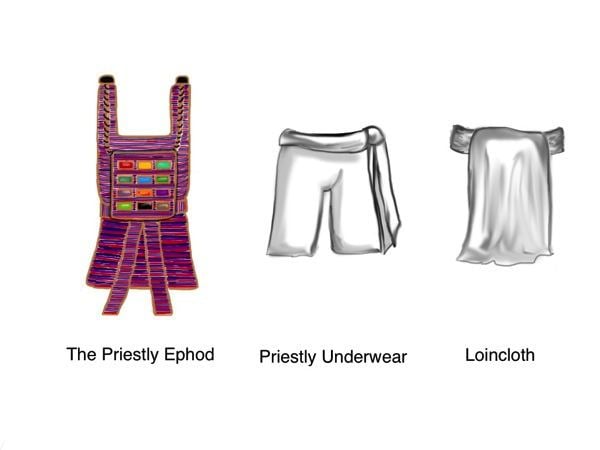 | ||
Similar Priestly breastplate, Priestly turban, Priestly golden head plate | ||
Priestly undergarments
The priestly undergarments (Biblical Hebrew: מִכְנְסֵי־בָד miḵnəsē-ḇāḏ) were "linen breeches" (KJV) worn by the priests and the High Priest in ancient Israel. They reached from the waist to the knees and so were not visible, being entirely hidden by the priestly tunic.
Contents
Hebrew Bible
The biblical commandment instituting their use is found in the Book of Exodus 28:42
You shall also make for them linen breeches to cover their nakedness; they shall extend from the hips to the thighs.
Unlike the other priestly vestments which were "for glory and for beauty" (Exodus 28:2), the purpose of the michnasayin was for modesty, "to hide their nakedness". In the Book of Leviticus when Moses consecrates Aaron and his sons as High Priest and priests, respectively, the linen undergarments are not mentioned (Leviticus 8:7, 8:13), though their use is obviously presumed.
There were four holy garments worn by both the priests and the High Priest alike:
Talmud
The Talmud records the worn out undergarments and priestly sashes were used for torch wicks in the Temple. The linen undergarments symbolized the abolition of the distinction between the heavenly and the mortal part of man, as contrasted with the divine nature, which is absolutely holy and living. According to the Talmud, the undergarments atone for the sin of sexual transgressions on the part of the Children of Israel (B.Zevachim 88b).
